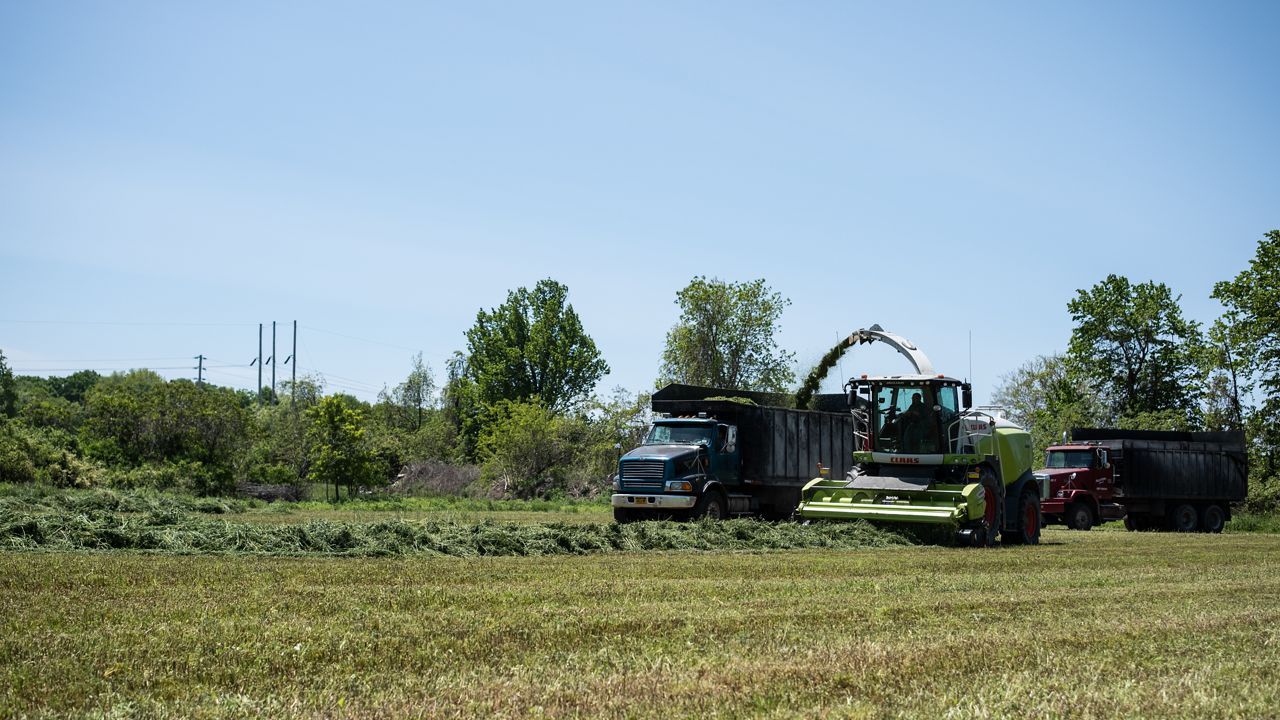Financial pressures on farmers have led to a continued loss of New York farmland, according to a new audit by the New York state comptroller, which recommended increasing the use of the farmland protection program to help mitigate these losses.
“In many parts of New York, farmers face increased pressure to sell their land for development or for solar farms, but our agriculture sector and consumer access to local food rely on keeping prime land in production. In my office’s ongoing examination of New York’s agricultural economy and the challenges family farms contend with, we found the Farmland Protection Program has preserved more than 114,000 acres but can do more to address changing needs and support the future of farming,” said Comptroller Tom DiNapoli in a statement.
The audit found an average delay of 200 days in the last two rounds of funding for the program, which they blamed on inefficiencies in how the money is split.
The state Department of Agriculture and Markets divides the funding equally among 10 regions across the state, which includes New York City, even though farmers there are ineligible for the program. After all applications have been received, the department takes any remaining funds, including the money allocated to New York City, to give to other projects. This creates a delay for when the remaining funding is available, the comptroller’s office said.
The counties in the New York City region do not have an approved agricultural plan, which is a requirement for the farmland protection program, and therefore cannot receive funding.
In the most recent round of funding, there was an average delay of 181 days for $23.5 million to preserve 9,668 acres. If the funding allocation excluded the New York City region and instead was equally divided among the other nine, funding could be awarded to approved projects more quickly, according to the audit.
In response to the audit, the Department of Agriculture and Markets said they generally agree with this finding and will continue to reevaluate the effectiveness and make changes as necessary.
Linda Garrett, regional director for New York and New Jersey’s American Farmland Trust, also called out the amount of time the state takes to execute a contract once a project gets announced. These delays sometimes cause farmers to abandon projects because of the financial pressure they face.
“Farmers can’t wait that long — they’ve got plans. You’ve got solar or a development or some other thing they are considering trying to make it work, Garrett said. ”Right now, the way that the conservation easements for farmland protection are, you have to use the state’s model and it doesn’t really provide for any solar, [or] even agrivoltaics.”
There are strict guidelines for solar development on farmland when it’s going to be placed into a conservation easement, she said.
Solar developers will often approach farmers to use a small portion of their land for panels, then farmers will receive anywhere between $250 and $2,500 per acre per year, according to the audit.
“Maybe they have some marginal land where they’re going to be able to develop a project and that farmer is going to have dedicated income and also be able to continue their farm, so they’re just not going to do the farmland protection project,” Garrett said.
Julian Mangano, New York policy manager for the American Farmland Trust, said it all comes down to finances, particularly if farmers nearing retirement and don’t have a success plan.
“A developer comes and provides a pretty satisfactory deal for purchasing, leasing or outright taking over the land and that will set some of these farmers long-term into retirement and still provide some finances to their family,” Mangano said.
Using data from the U.S. Department of Agriculture’s Census, the greatest losses of farmland from 2017 to 2022 were found in Allegany, Lewis, Steuben, St. Lawrence and Wyoming counties. These counties lost a combined 194,200 acres.
A 2016 report from American Farmland Trust said if more steps aren't taken to protect farmland, New York could lose 452,000 acres by 2040.
Census data show the state is already close to exceeding that figure. Between 2017 and 2022, the state lost 365,000 acres — equivalent to the size of 430 Central Parks.
The comptroller’s audit recommended reevaluating the limit of funding per project, which was last set in 2014 at $2 million.
“[The cap] has a greater impact on regions with higher land values and greater development pressures. Farms in high-value areas may not be able to obtain adequate funding for their farmland conservation in one application. This poses a challenge depending on the size of the farm needing protection,” the report reads.
From 2012-2022, land value increased by at least 40% in all regions. Half of the regions jumped 65% and Long Island by 150%.
In areas where there is a lot of farmland, bigger farms are purchasing the smaller farms and that leads to an increased value of the land and bolsters the case for preserving the land, Garrett said.
“The easement is worth the difference between the farmland value and the development value, so if you’re increasing that farmland value then that margin is getting smaller,” she said.
Garrett said that while raising the cap could be beneficial, there may be a downside if the regional maximum remains the same.
“I think if it’s raised and there’s only $5 million per region, that’s going to limit the number of projects that can happen. It’s kind of a Catch-22 situation,” Garrett said.


